Welcome to Nairobi, the city of birds! Nairobi is home to a wide variety of birds, ranging from the familiar to the exotic. From vibrant sunbirds and colorful kingfishers to the majestic ostrich, Nairobi is a birder’s paradise.
With its diverse habitats, ranging from forests to grasslands, Nairobi is a great place to observe and photograph birds. Whether you are a beginner or an experienced birder, Nairobi is a great place to start.
With its abundance of bird species, you will never run out of things to explore and discover. So come and explore the wonders of Nairobi and its avian inhabitants!
1. Grey-crowned Crane
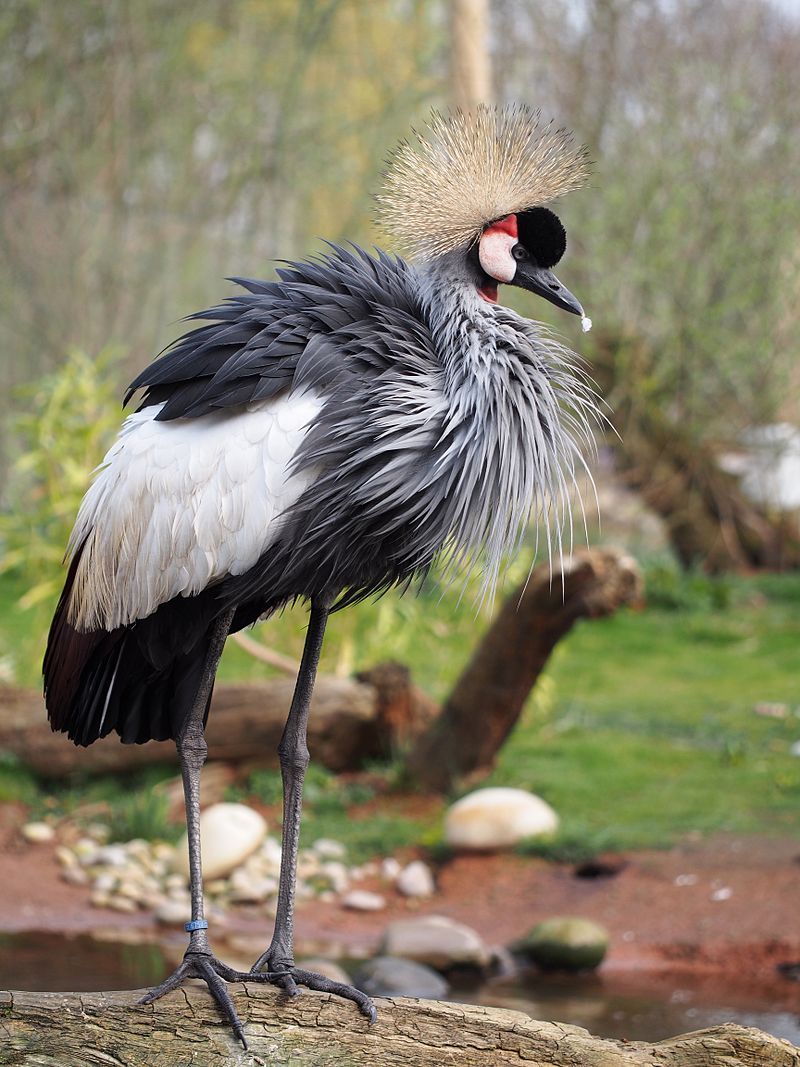
The grey crowned crane is a beautiful and majestic bird found throughout the African continent. It is part of the Gruidae family, which includes other species of cranes.
The grey crowned crane is also known by many different names, including African crowned crane, golden crested crane, golden-crowned crane, East African crane, East African crowned crane, African crane, Eastern crowned crane, Kavirondo crane, South African crane, and crested crane. The grey-crowned crane is a large bird with a wingspan of up to 2 meters.
It is grey in color with white patches on the wings and a yellow crown on its head. It has a long neck and a long red wattle, or fleshy lobe, that hangs from the base of the bill.
Its legs are long and grey, and its feet are adapted for walking on moist ground. In terms of habitats, the grey-crowned crane is typically found in the grasslands and wetlands of Africa.
It is an omnivore and feeds on both plants and animals, including insects, small mammals, and fish. It is also known to scavenge for food. The grey crowned crane is an important species to many African cultures, often being featured in traditional dances and music.
It is also a symbol of good luck and is represented in various works of art. It is an endangered species, and conservation efforts are underway to preserve the species.
| Kingdom | Animalia |
| Phylum | Chordata |
| Class | Aves |
| Order | Gruiformes |
| Family | Gruidae |
| Genus | Balearica |
| Species | B. regulorum |
2. Namaqua Dove
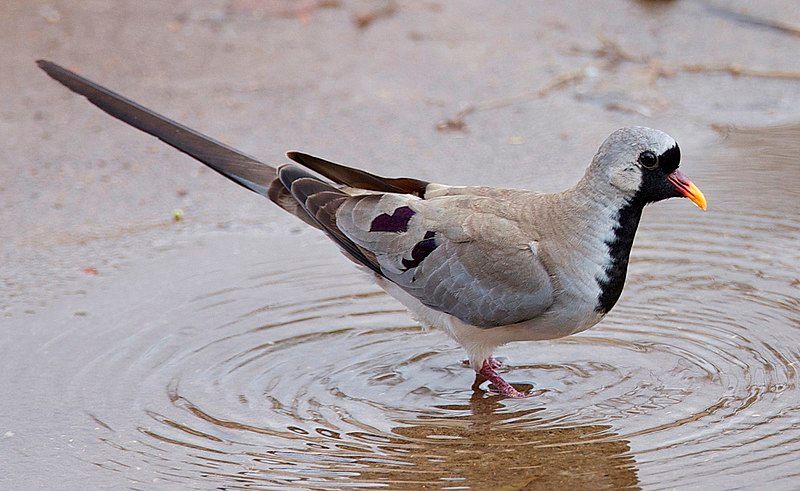
The Namaqua dove is a small species of pigeon native to Sub-Saharan Africa, Arabia, and Madagascar. It is the only species in the genus Oena and is a unique bird with a distinctive look. Its head is grayish-brown, its nape is white, and its breast is a pale grayish-green.
The wings are brown with white stripes and the tail is tipped with white. The Namaqua dove is found throughout much of Sub-Saharan Africa, from Senegal to Somalia, and on the Arabian Peninsula. It is also found on the island of Madagascar.
The bird prefers open grassland and savanna habitats, but can also be found in dry shrubland and desert.
It is a ground-dwelling species, foraging for food such as seeds, grains, and insects on the ground. The Namaqua dove is a social species and can usually be found in groups of up to twenty individuals.
During the breeding season, pairs of Namaqua doves form monogamous pairs and build a shallow cup-shaped nest on the ground. The female usually lays two eggs, which both parents take turns incubating.
The chicks fledge after about two weeks and are cared for by their parents until they become independent. The Namaqua dove is not considered threatened or endangered. However, its populations are likely declining due to habitat loss and degradation.
It is also hunted for food in some parts of its range. Conservation efforts are needed to protect this unique species and its habitats.
| Kingdom | Animalia |
| Phylum | Chordata |
| Class | Aves |
| Order | Columbiformes |
| Family | Columbidae |
| Genus | Oena |
| Species | O. capensis |
3. Ring-necked Dove
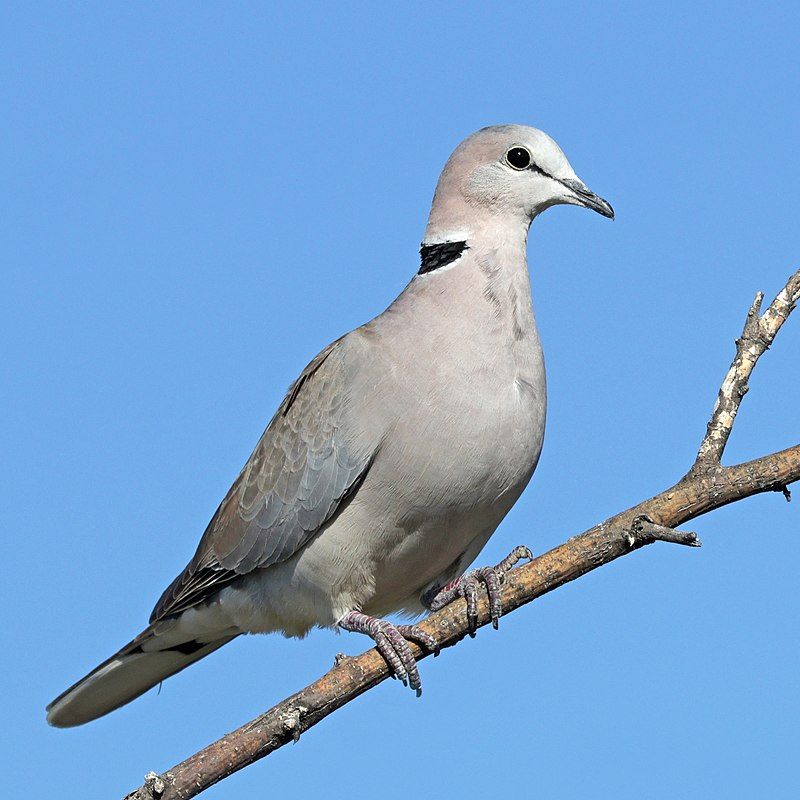
The ring-necked dove is an unmistakable species that is native to East and Southern Africa. It is a mostly sedentary bird, meaning that it spends most of its time in one location, and can be found in a wide variety of open habitats.
This species is also known as the Cape turtle dove or half-collared dove and is usually seen in flocks. It is quite abundant in most parts of its range and can be spotted quite easily due to its distinct plumage.
The ring-necked dove has a light gray head, with a dark patch around its eyes, and a white half-collar around its neck. Its back and wings are brown, with a pale gray rump, and its belly is white. Its tail is tipped white, and its legs are pink.
It feeds mainly on seeds and is a ground feeder. It is also known to forage in trees. This species is known for its distinctive call, which is a soft, cooing sound. It is a social species, often seen in pairs or small flocks, and is a common sight in many African countries.
| Kingdom | Animalia |
| Phylum | Chordata |
| Class | Aves |
| Order | Columbiformes |
| Family | Columbidae |
| Genus | Streptopelia |
| Species | S. capicola |
4. Secretary Bird
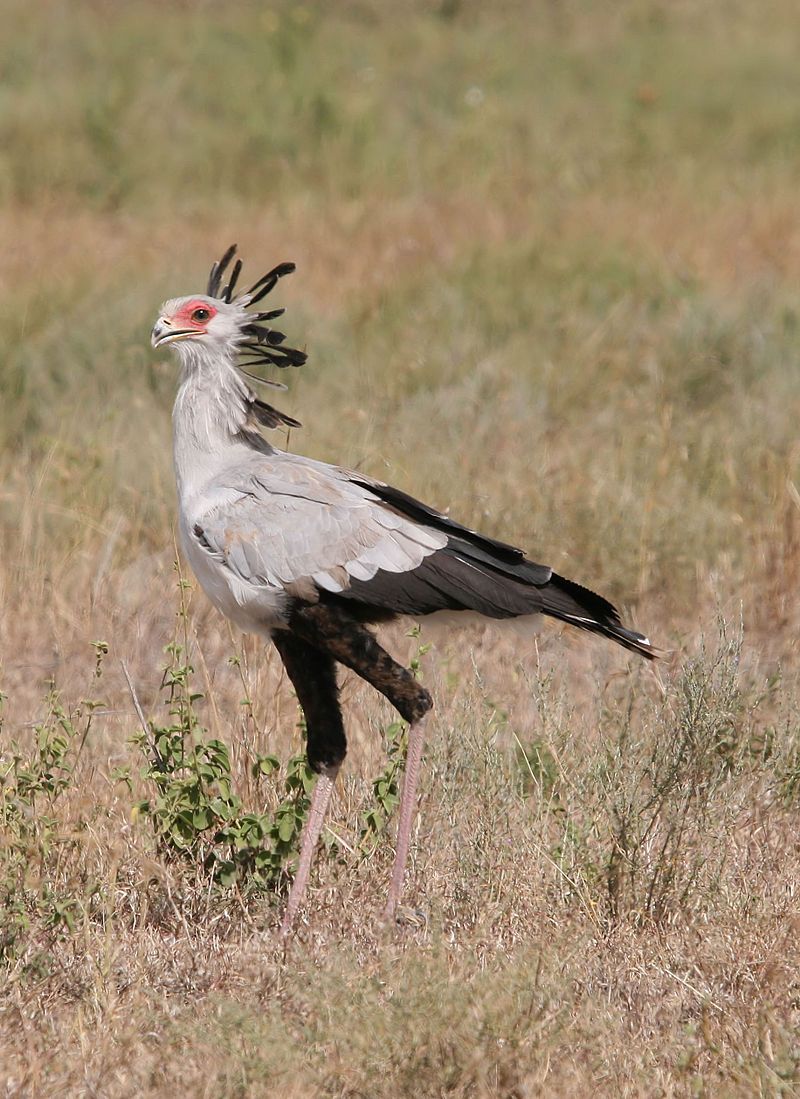
The secretarybird is a large, distinct bird of prey that is endemic to Africa. Endemic means that it is found only in that region and nowhere else.
It is mostly found in the open grasslands and savannas of the sub-Saharan region, which is the large swathe of land in Africa south of the Sahara Desert. This bird was first described by John Frederick Miller in 1779.
It is easily identifiable by its long legs, long neck, and a crest of feathers on its head. It feeds on snakes, lizards, rodents, and other small animals, and it usually hunts by walking slowly through the grasslands and flushing out its prey.
It is a powerful and impressive predator of the African savanna and grasslands, and it is an important part of the African ecosystem.
| Kingdom | Animalia |
| Phylum | Chordata |
| Class | Aves |
| Order | Accipitriformes |
| Family | Sagittariidae |
| Genus | Sagittarius |
| Species | S. serpentarius |
5. Speckled Pigeon
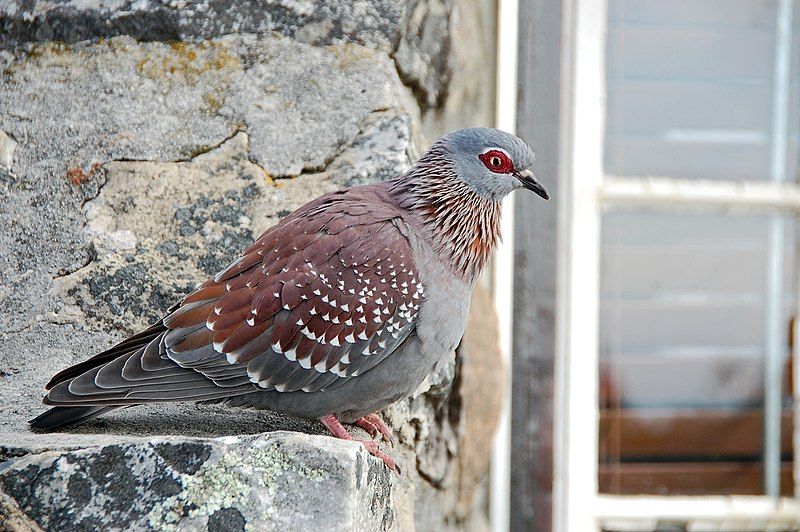
The speckled pigeon is a species of bird that can be found in many parts of Africa south of the Sahara Desert. It is a common bird that can be found in open habitats throughout its range, though there are areas where it is not found.
The speckled pigeon is also known as the African rock pigeon or the Guinea pigeon. It is a resident breeding bird in these regions, meaning that it is not migratory and instead will stay in the same area all year round.
The speckled pigeon is found in a variety of habitats, such as grasslands, savannas, woodlands, and even in urban areas. It is usually seen in flocks and will feed on seeds, grains, and other vegetation.
The speckled pigeon is an important species in its native range, providing an important food source for many predators.
| Kingdom | Animalia |
| Phylum | Chordata |
| Class | Aves |
| Order | Columbiformes |
| Family | Columbidae |
| Genus | Columba |
| Species | C. guinea |
6. Common Ostrich
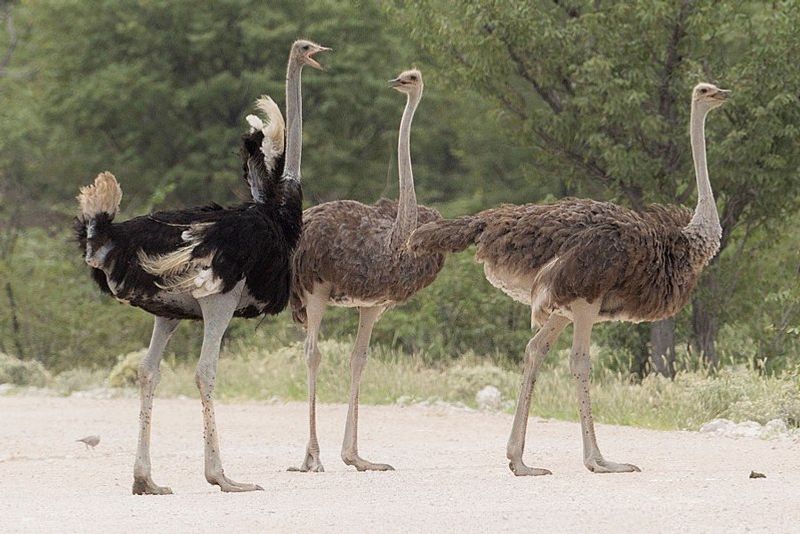
The common ostrich is a large bird that is native to many parts of Africa. It is a flightless bird, meaning it cannot fly, and is the only living member of the genus Struthio, which is in the ratite order of birds.
It is the most well-known species of ostrich, with two other species that are now extinct. Ostriches are the largest living bird species, ranging from nine to ten feet tall and weighing up to 320 pounds.
They are mostly found in the savannas and deserts of Africa and can run up to speeds of 43 miles per hour. They have long legs and necks and can be identified by their distinctive black and white feathers.
Ostriches have powerful eyesight and hearing, which helps them detect predators from far away. They are also powerful kickers, capable of delivering a powerful kick that can kill or injure a potential predator.
They are omnivores, eating both plants and animals and can survive for weeks without food or water. Ostriches live in large flocks and are social animals that cooperate in caring for their young, protecting their territory, and foraging.
| Kingdom | Animalia |
| Phylum | Chordata |
| Class | Aves |
| Order | Struthioniformes |
| Family | Struthionidae |
| Genus | Struthio |
| Species | S. camelus |
7. Red-eyed Dove
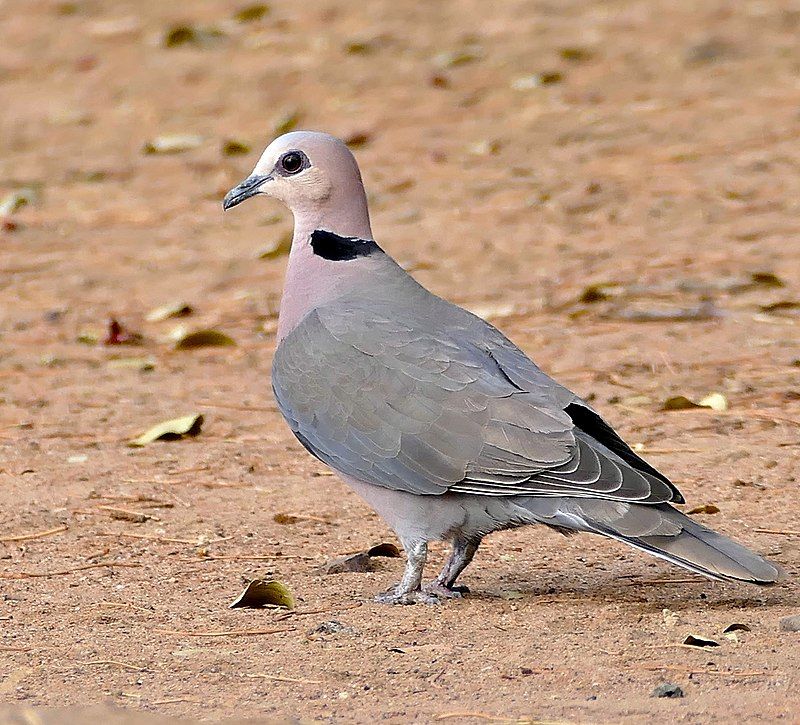
The red-eyed dove is a species of dove that is found throughout Sub-Saharan Africa. It is widespread and abundant in this region, making it an important part of the local ecosystem.
The International Union for Conservation of Nature (IUCN) has listed this species as Least Concern on their Red List since 2004. This is because its population is stable and not facing any major threats.
While habitat destruction and other environmental changes can affect the red-eyed dove, it is currently not threatened with extinction. The species is an important part of its local ecosystem, providing food for other animals and helping to maintain ecological balance.
| Kingdom | Animalia |
| Phylum | Chordata |
| Class | Aves |
| Order | Columbiformes |
| Family | Columbidae |
| Genus | Streptopelia |
| Species | S. semitorquata |
8. Kori Bustard
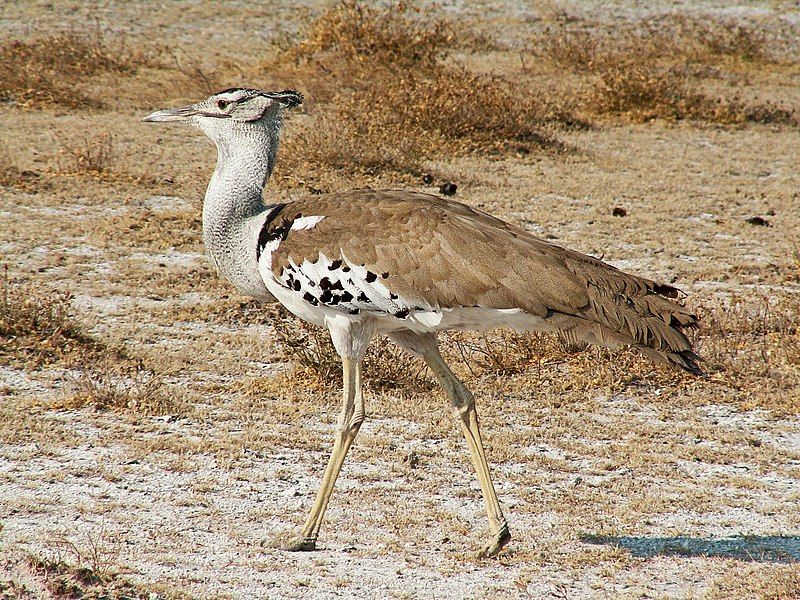
The kori bustard is the largest flying bird found in Africa and is a member of the bustard family. This family of birds belongs to the order Otidiformes, which is only found in the Old World.
The kori bustard is one of four species of large-bodied birds that comprise the genus Ardeotis. This genus is most often found in Africa, although some species may be found in parts of the Middle East.
The kori bustard stands out from the other birds in this family due to its larger size. Its wingspan can reach up to 2.5 meters, making it one of the largest flying birds in the world.
It has a grayish-brown body with white feathers on its neck and chest and a distinctive black-and-white striped pattern on its wings. In addition to its impressive size, the kori bustard is also known for its loud call, which is made up of a series of honks and hoots.
These vocalizations are used to both attract mates and warn off potential threats.
| Kingdom | Animalia |
| Phylum | Chordata |
| Class | Aves |
| Order | Otidiformes |
| Family | Otididae |
| Genus | Ardeotis |
| Species | A. kori |
9. African Fish Eagle
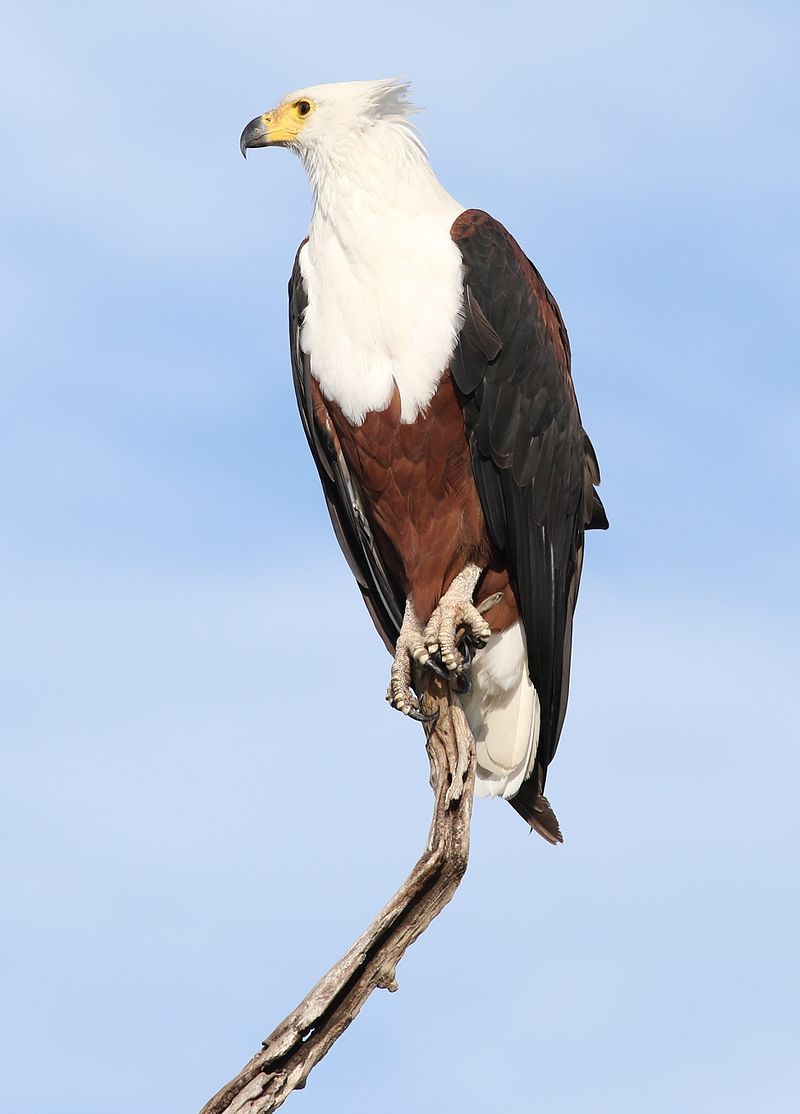
The African fish eagle, or African sea eagle, is a species of eagle that is commonly found in sub-Saharan Africa. It is an impressive bird, with its large wingspan and distinctive call.
It is most often found near large bodies of open water, where there is an abundance of food for it to feed on.
Due to its wide geographical range, it is a familiar sight to many different cultures throughout Africa, and it has become the national bird in several countries, including Malawi, Namibia, Zambia, and Zimbabwe.
It is also known by different names in different areas of the continent, reflecting the diversity of cultures in Africa. The African fish eagle is an apex predator, often preying on fish, reptiles, and small mammals.
It is an important part of the food chain, keeping the populations of its prey in check. Its impressive wingspan and powerful talons make it an efficient hunter, and its ability to dive and snatch its prey from the water makes it an impressive sight.
With its striking plumage of snow-white head and tail and brown body, it is not hard to see why it is so revered by many African cultures.
The African fish eagle is an important part of the African ecosystem, and its presence is a reminder of the beauty and diversity of the continent.
Its association with the national bird of several African countries further highlights its importance, and its ability to adapt to different environments is a testament to its resilience.
| Kingdom | Animalia |
| Phylum | Chordata |
| Class | Aves |
| Order | Accipitriformes |
| Family | Accipitridae |
| Genus | Icthyophaga |
| Species | I. vocifer |
10. White-browed Coucal
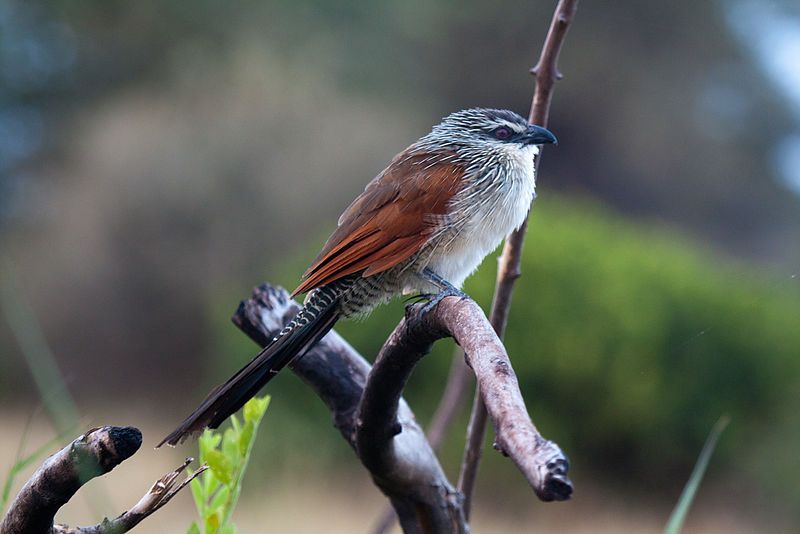
The white-browed coucal, also known as the lark-heeled cuckoo, is a species of cuckoo found in sub-Saharan Africa. It prefers habitats with thick vegetation, such as dense undergrowth and scrub, and it can also be found in suitable coastal regions.
It is believed by some that Burchell’s coucal is a subspecies of this species. The white-browed coucal is a medium-sized bird, typically measuring between thirty-four and thirty-six centimeters in length.
Its plumage is mainly chocolate brown with a white head and throat, giving it its distinctive name. Its diet consists mainly of insects, which it catches on the ground or by hovering in the air like a hawk.
The white-browed coucal is a solitary bird, and usually only comes together in small groups when mating. The male will then construct a nest of twigs and leaves in a tree or bush, and the female will lay two to five eggs in the nest.
The eggs will hatch after around a month, and the chicks will stay in the nest for another two to three weeks before they fledge. The white-browed coucal is a relatively common species, but its population is declining due to habitat loss and destruction.
Conservation efforts are being made to protect this species, and it is listed as of least concern on the IUCN Red List.
| Kingdom | Animalia |
| Phylum | Chordata |
| Class | Aves |
| Order | Cuculiformes |
| Family | Cuculidae |
| Genus | Centropus |
| Species | C. superciliosus |
11. African Green Pigeon
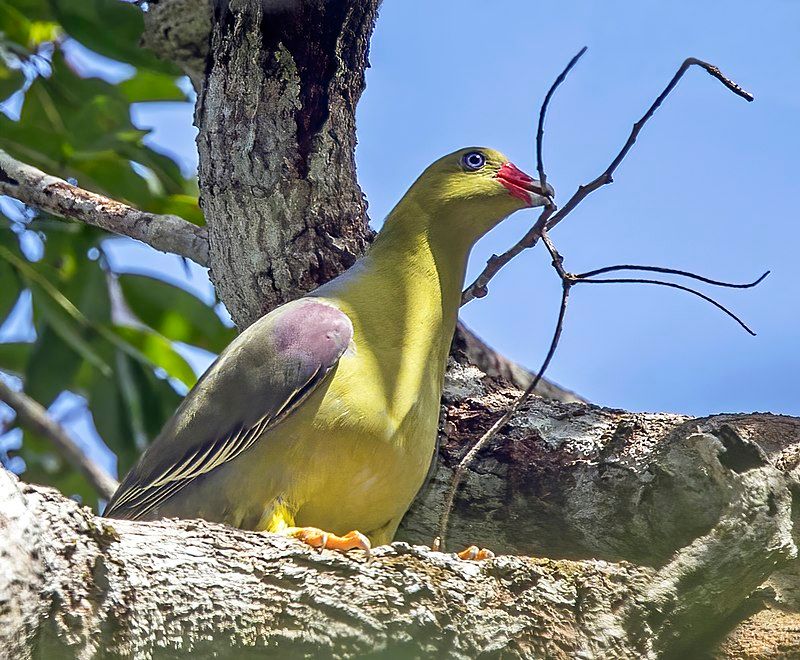
The African green pigeon is a species of bird that belongs to the family Columbidae, which consists of over 300 different species of pigeons and doves.
This species is one of five green pigeon species that are found in the Afrotropics, a region consisting of parts of Africa, the Arabian peninsula, and the Indian Ocean islands. African green pigeons have a wide range of sub-Saharan Africa, with around 17 accepted races.
These races vary in terms of color and size, but the most common colors are light brown, yellow, and green. The African green pigeon is an omnivore, meaning it feeds on both plants and animals. Its diet consists of seeds, grains, insects, fruits, and small invertebrates.
The African green pigeon plays an important role in the ecosystem, as it helps in seed dispersal and pest control.
| Kingdom | Animalia |
| Phylum | Chordata |
| Class | Aves |
| Order | Columbiformes |
| Family | Columbidae |
| Genus | Treron |
| Species | T. calvus |
12. Dusky Turtle Dove
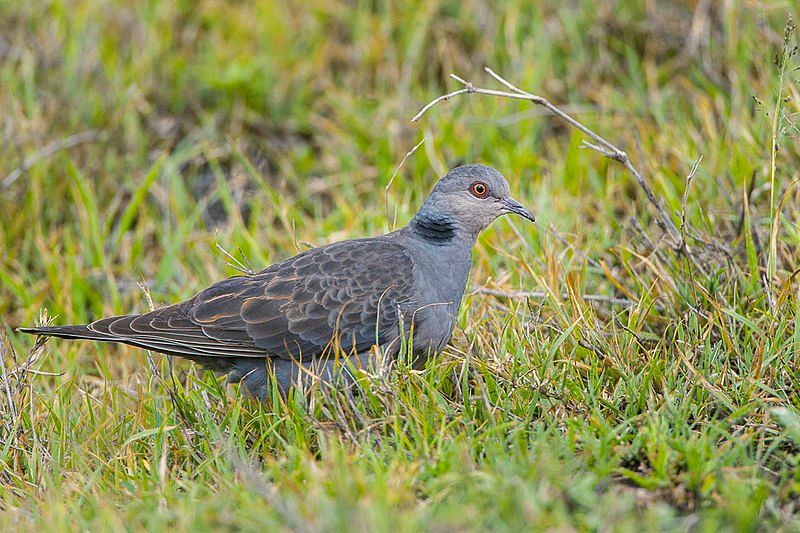
The Dusky Turtle Dove is a species of bird belonging to the family Columbidae, which includes doves and pigeons.
This species is native to a wide range of countries in the African continent, including Burundi, the Democratic Republic of the Congo, Eritrea, Ethiopia, Kenya, Malawi, Rwanda, Somalia, South Sudan, Tanzania, Uganda, Yemen, and Zambia.
It is a medium-sized bird, with a slaty grey-brown head and wings, and a pinkish-brown belly. The Dusky Turtle Dove is found in a variety of habitats, such as woodlands, savannas, and grasslands.
It is a social bird, often forming large flocks, and has a distinctive, melodious call. It is known to feed on seeds, fruits, and insects. In some parts of its range, the Dusky Turtle Dove is threatened by habitat loss and hunting.
It is listed as a species of least concern on the IUCN Red List of Threatened Species.
| Kingdom | Animalia |
| Phylum | Chordata |
| Class | Aves |
| Order | Columbiformes |
| Family | Columbidae |
| Genus | Streptopelia |
| Species | S. lugens |
13. Emerald-spotted Wood Dove
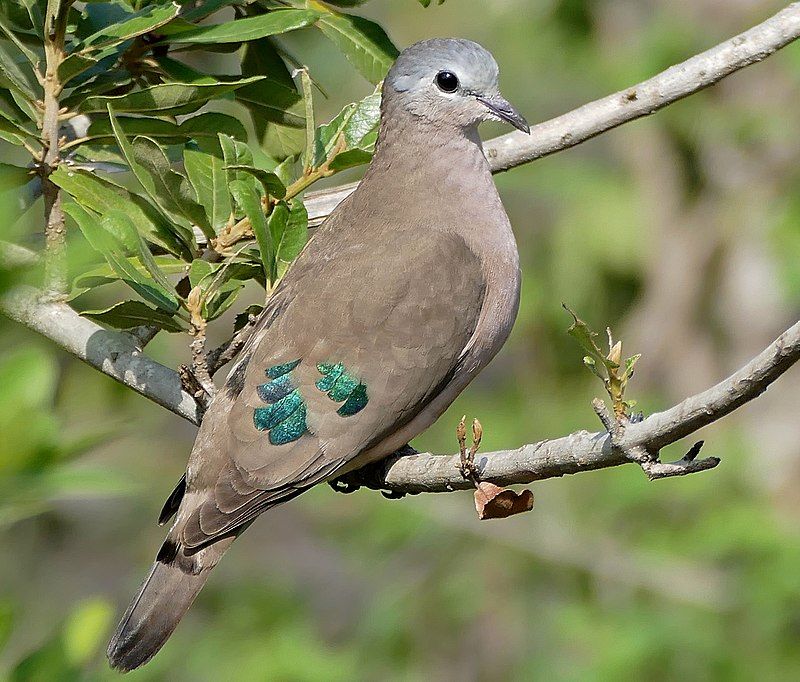
The emerald-spotted wood dove is a species of bird found in eastern and southern Africa. This bird prefers open, dry deciduous woodland and secondary growth, avoiding evergreen rainforests and semi-desert regions.
This species is part of the Columbidae family, which includes other species such as doves, pigeons, and sandgrouse. The emerald-spotted wood dove is a medium-sized bird, with a range of colors including black, grey, and brown.
The most distinguishing feature of this species is the emerald-green spots on its wings and tail feathers.
This species is also known for its distinctive call, which is a low coo that is repeated several times. The emerald-spotted wood dove is a ground-dwelling bird that is usually seen in pairs or small groups.
This species feeds mainly on seeds, fruits, and insects, and roosts in trees at night.
These birds also nest in tree cavities, laying two eggs at a time. The emerald-spotted wood dove is a fairly common species in its range, but its population is believed to be declining due to habitat destruction and human disturbance.
It is currently listed as a species of least concern on the IUCN Red List. Conservation efforts such as protecting its habitat and creating safe nesting sites can help ensure the survival of this species.
| Kingdom | Animalia |
| Phylum | Chordata |
| Class | Aves |
| Order | Columbiformes |
| Family | Columbidae |
| Genus | Turtur |
| Species | T. chalcospilos |
14. Hartlaub’s Turaco
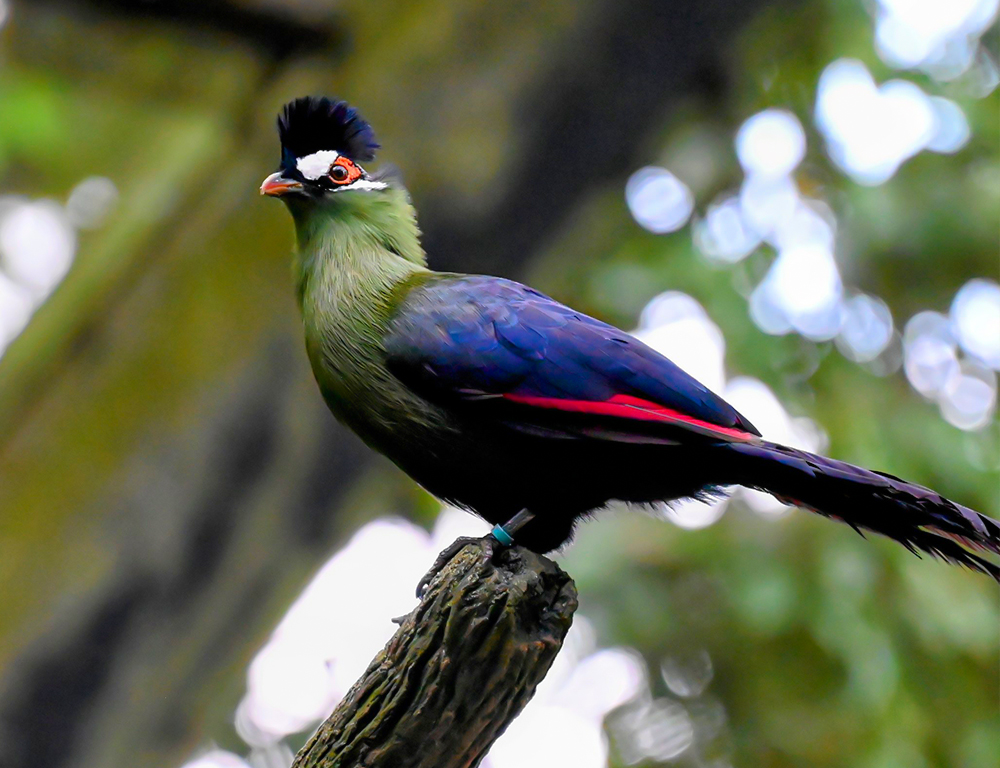
Hartlaub’s turaco is a type of bird belonging to the family Musophagidae. It is native to Kenya, Tanzania, and Uganda. The bird was named in honor of German physician and ornithologist Gustav Hartlaub.
Hartlaub was a prominent figure in the field of ornithology and his name has been associated with several species of birds. The common name and Latin binomial are both derived from his name, forming an enduring tribute to his legacy.
Hartlaub was a pioneer in the field of ornithology and was responsible for the discovery of several species of birds that were previously unknown to science. He was an avid collector of bird specimens and dedicated himself to the study of avian taxonomy.
His work was highly influential, and he was respected by many of his peers for his expertise. Hartlaub’s turaco is a species of bird that is considered to be of conservation concern. It is found in a small range, and its population numbers are believed to be declining.
This species is threatened by habitat destruction and fragmentation as well as hunting pressure. Conservation efforts are needed in order to ensure that Hartlaub’s turaco does not become extinct in the wild.
Naming a species after Gustav Hartlaub is a fitting tribute to his memory and a reminder of the important contributions he made to the field of ornithology.
His name will forever be associated with this species, which serves as a reminder of his legacy and the importance of conservation.
| Kingdom | Animalia |
| Phylum | Chordata |
| Class | Aves |
| Order | Musophagiformes |
| Family | Musophagidae |
| Genus | Tauraco |
| Species | T. hartlaubi |
15. Rameron Pigeon
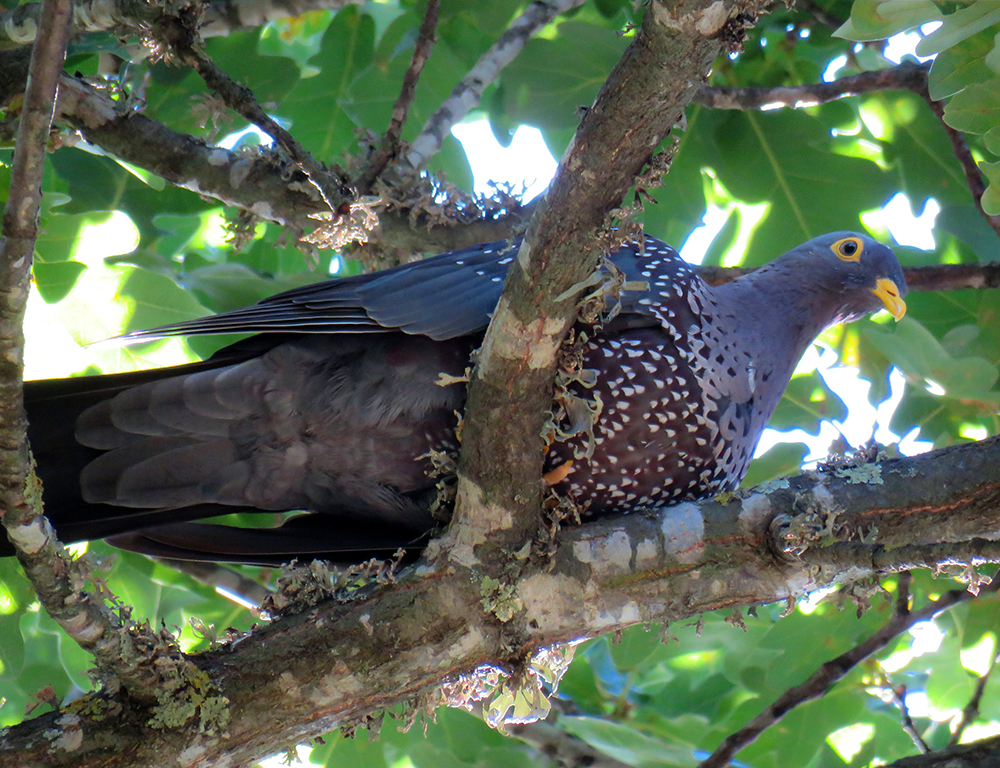
The African olive pigeon, also known as the Rameron pigeon, is a native bird species found in many parts of eastern and southern Africa.
Its range extends from Ethiopia in the north to the Cape in the south and also takes in western Angola, southwestern Saudi Arabia, and northern Yemen.
It is a resident breeding bird, meaning that it is found in the same area year-round, as opposed to a migratory bird which only passes through at certain times of the year.
The African olive pigeon is a medium-sized bird, typically dark grey or brown with a distinctive white band across its chest.
Its diet consists of a variety of fruits, including olives, figs, and berries, as well as seeds and grains.
It is a social bird, found in small flocks or pairs, and is usually seen flying low over open grassland or woodland. The African olive pigeon plays an important role in African ecosystems, as it is an important seed disperser.
Its diet of fruits and seeds helps to maintain the health and productivity of local vegetation, as well as providing food for other bird and animal species.
This species is not considered to be at risk, though it is vulnerable to habitat loss due to human activities such as deforestation and agricultural expansion.
| Kingdom | Animalia |
| Phylum | Chordata |
| Class | Aves |
| Order | Columbiformes |
| Family | Columbidae |
| Genus | Columba |
| Species | C. arquatrix |
16. Helmeted Guineafowl
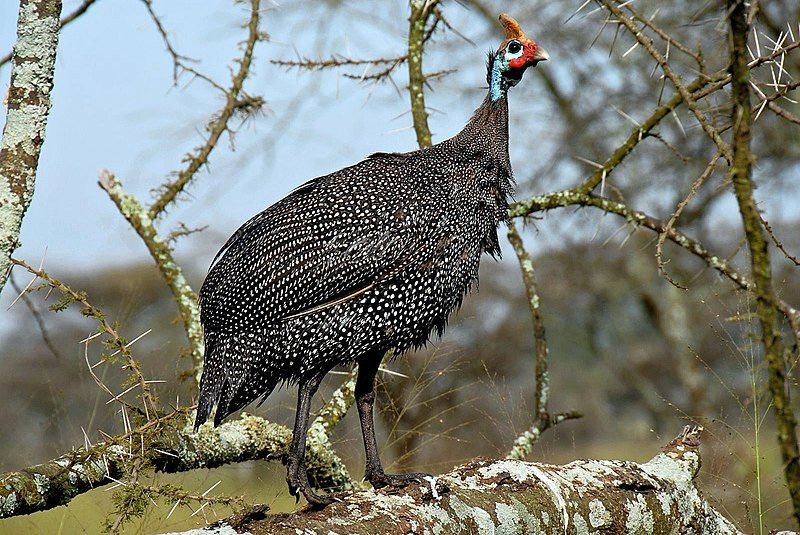
The helmeted guineafowl is a species of bird that is part of the Numididae family, and the only one in its genus. It is native to Africa, mostly south of the Sahara, and has been widely domesticated and introduced to other parts of the world.
The West Indies, North America, Colombia, Brazil, Australia, and Europe have all seen the introduction of domesticated helmeted guineafowl. These birds are now kept in many of these countries for their meat, eggs, and feathers.
The helmeted guineafowl is also popular as an ornamental bird, as they are quite attractive with their spotted plumage. This species of bird is omnivorous, meaning that they eat both plant and animal matter.
They feed on a variety of foods, including insects, small mammals, reptiles, seeds, fruits, and more. The helmeted guineafowl is also popular with hunters, as it is known to be quite wary and difficult to catch.
| Kingdom | Animalia |
| Phylum | Chordata |
| Class | Aves |
| Order | Galliformes |
| Family | Numididae |
| Genus | Numida |
| Species | N. meleagris |
17. White-faced Whistling Duck
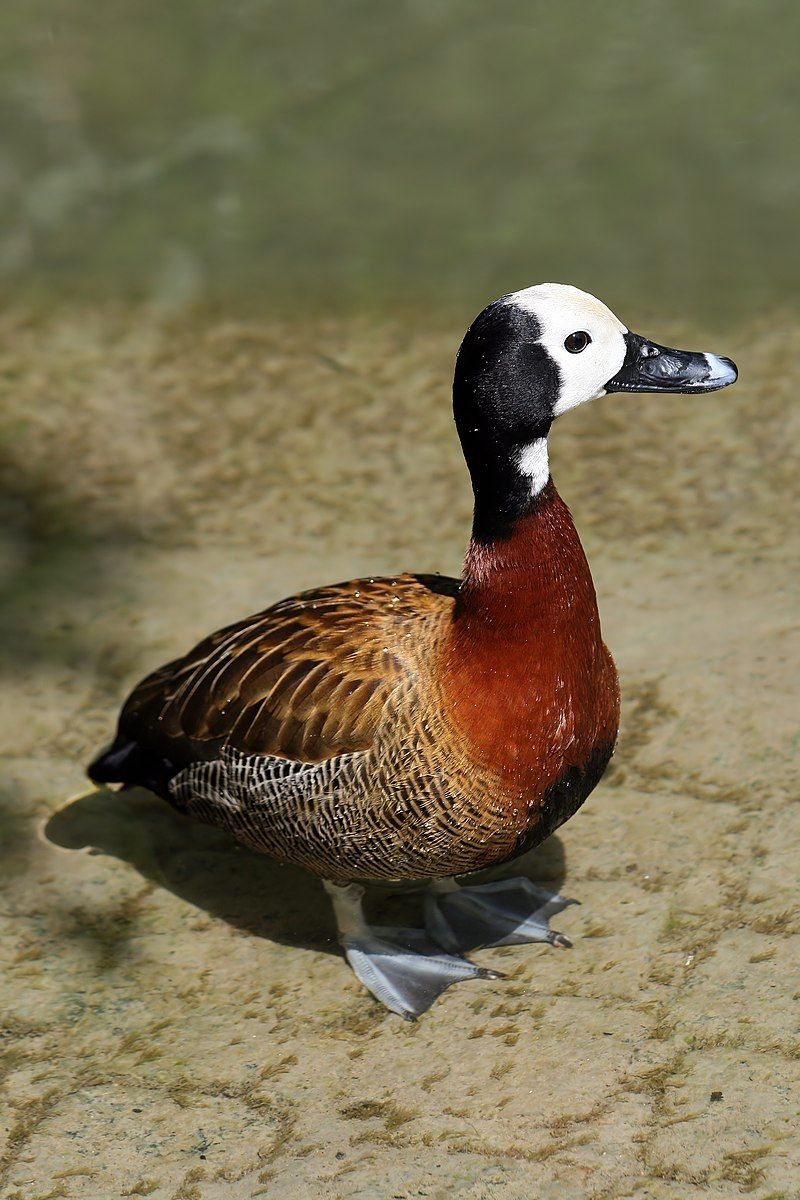
The white-faced whistling duck is a species of waterfowl that is found in both sub-Saharan Africa and much of South America. It is a social bird, often seen in flocks. These flocks can be incredibly large, often composed of over a thousand birds.
When these large groups of birds arrive at their favored sites at dawn, the sight is quite spectacular. The white-faced whistling duck is well known for its distinctive call, which it gives off as it flies.
This call is a unique combination of whistles, squeaks, and chirps, and is often described as a “wee-wee-wee” or “whistle-whistle-whistle.”
This call is one of the many things that make this species so appealing to bird watchers and nature lovers alike. The white-faced whistling duck is a medium-sized species of waterfowl, measuring between 18 and 26 inches in length.
Its plumage is predominantly dark brown, but it has a white face and a white patch on the back of its neck. Its eyes are bright yellow, and its bill is black. The white-faced whistling duck can be seen in wetlands, marshes, and along rivers and lakes.
They forage for food in shallow water, feeding on plant matter such as seeds and insects. They build their nests in a variety of places, including tree cavities, reed beds, and grassy areas.
In conclusion, the white-faced whistling duck is a beautiful and interesting species of waterfowl that is found in a variety of habitats throughout sub-Saharan Africa and much of South America.
Not only is it a pleasure to observe these birds in the wild, but their unique call is an unforgettable experience.
| Kingdom | Animalia |
| Phylum | Chordata |
| Class | Aves |
| Order | Anseriformes |
| Family | Anatidae |
| Genus | Dendrocygna |
| Species | D. viduata |
18. Laughing Dove
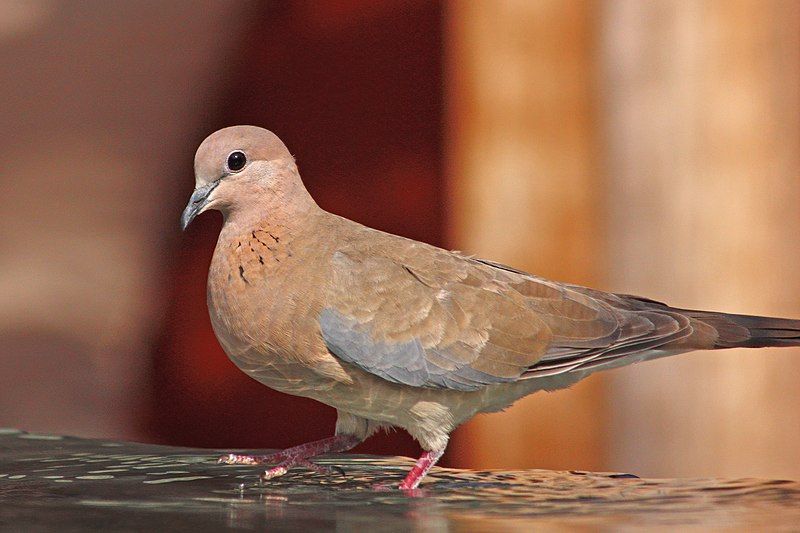
The Laughing Dove (Spilopelia senegalensis) is a small pigeon that is native to parts of Africa, the Middle East, South Asia, and Western Australia. It is a resident breeder, meaning that it does not migrate but instead stays in the same place to breed year-round.
In Western Australia, it has become established in the wild after being released from Perth Zoo in 1898. The Laughing Dove is easily identified by its distinctive call, a monotonous, three-syllable coo-COO-coo.
Its plumage is grayish-brown in color with a pinkish tinge on its neck and breast. It has dark spots on the wings and a chestnut-colored patch on its back.
The Laughing Dove feeds on seeds, grains, and small insects. The Laughing Dove is a social bird, often found in pairs or small flocks. It nests in trees and under thatched roofs, and the female typically lays two eggs.
Incubation is done by both parents, and the young fledge in about two weeks. The Laughing Dove is not considered a threatened species, but its population in some areas has declined due to habitat loss and hunting.
This species is also vulnerable to predation from larger birds, cats, and rats. Despite these threats, the Laughing Dove is still a common sight in many parts of its range.
| Kingdom | Animalia |
| Phylum | Chordata |
| Class | Aves |
| Order | Columbiformes |
| Family | Columbidae |
| Genus | Spilopelia |
| Species | S. senegalensis |
19. Lemon Dove
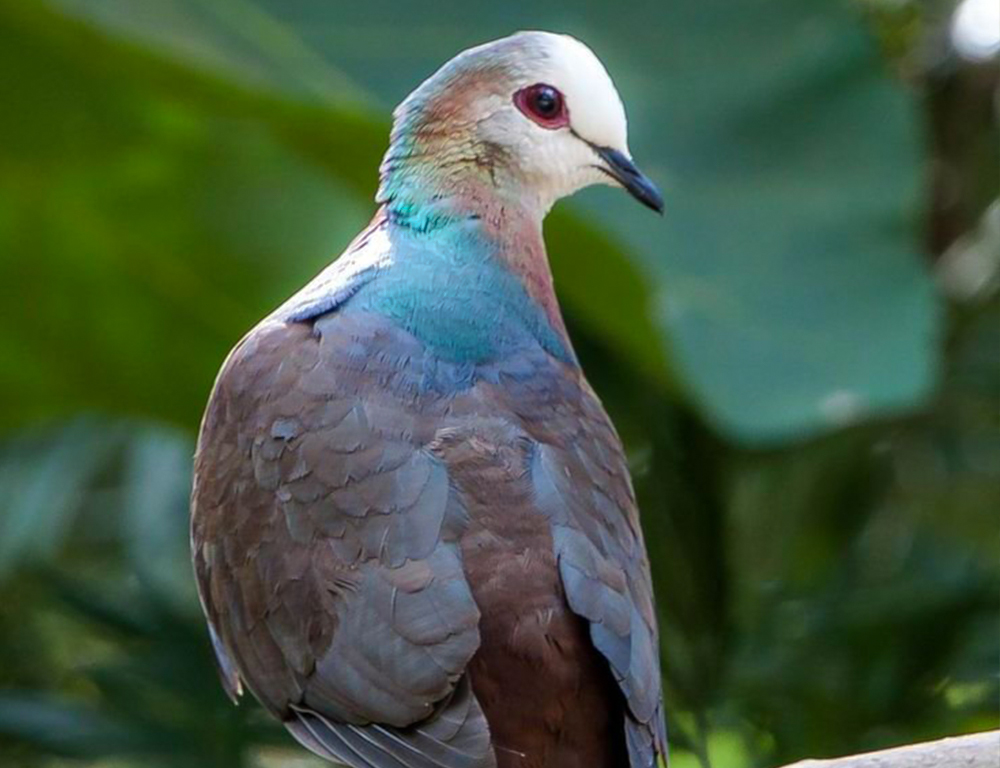
The Lemon Dove or Cinnamon Dove is a species of bird that is found in montane forests of sub-Saharan Africa. It is part of the Columbidae family, which is also known as the pigeon family. The Lemon Dove has a distinct plumage, which is mainly a brownish-grey color.
Additionally, it has a cinnamon brown breast, which makes it stand out from other birds in its family. The São Tomé Lemon Dove is often seen as a subspecies of the regular Lemon Dove. The Lemon Dove is usually found in pairs or small groups.
It prefers to live in montane forests that have a thick canopy of trees. The Lemon Dove feeds primarily on fruit, seeds, and insects. It has adapted to living in the higher altitudes of sub-Saharan Africa, and it is usually found at elevations of up to 3,000 meters.
The Lemon Dove is a very resilient species, and it can survive in a variety of different habitats.
It has a wide range, and it can be found in parts of Angola, Cameroon, Central African Republic, Congo, Democratic Republic of the Congo, Ethiopia, Kenya, Malawi, Mozambique, Nigeria, Rwanda, South Sudan, Tanzania, Uganda, and Zambia.
The Lemon Dove is an important species, not only for its ecological role but also for its aesthetic value. Its distinct plumage makes it an attractive bird, and it is admired by birdwatchers and nature enthusiasts.
While it is not currently threatened, it is important to monitor its population and habitat to ensure that it can thrive in the future.
| Kingdom | Animalia |
| Phylum | Chordata |
| Class | Aves |
| Order | Columbiformes |
| Family | Columbidae |
| Genus | Columba |
| Species | C. larvata |
20. Spur-winged Goose
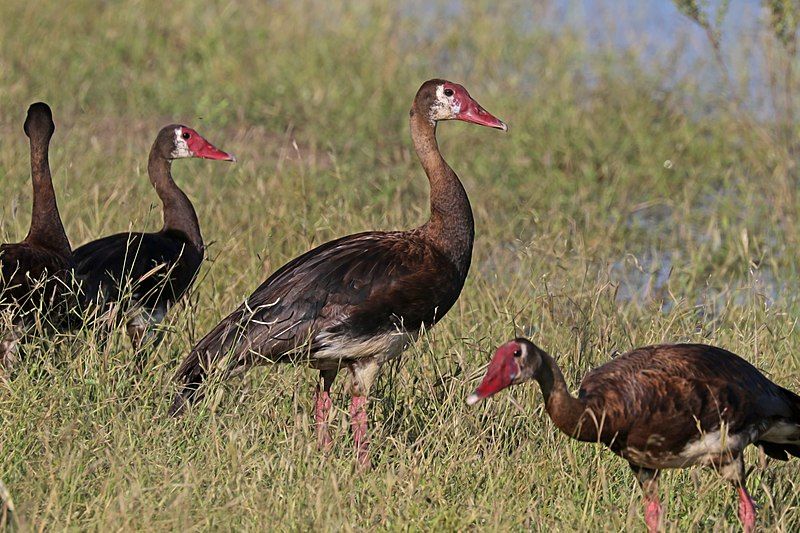
The spur-winged goose is a unique species of waterbird native to Sub-Saharan Africa. It is part of the Anatidae family, which includes both geese and shelducks. The spur-winged goose is a large bird, with an average length of 50-60 cm and a wingspan of up to 1 meter.
Its plumage is largely black and grey, with a white patch on the neck and white wingtips. It has long legs and a long, slender neck. Its most distinctive feature is its wings, which have two long spurs protruding from the leading edge.
These spurs are believed to be used during courtship displays and territorial disputes. The spur-winged goose is a social species, often seen in large flocks in wetlands and open grasslands. Its diet consists of small aquatic invertebrates, seeds, and leaves.
The spur-winged goose is a threatened species, due to habitat loss and hunting. It is listed as Vulnerable on the IUCN Red List of Threatened Species.
| Kingdom | Animalia |
| Phylum | Chordata |
| Class | Aves |
| Order | Anseriformes |
| Family | Anatidae |
| Genus | Plectropterus |
| Species | P. gambensis |
21. Black Kite
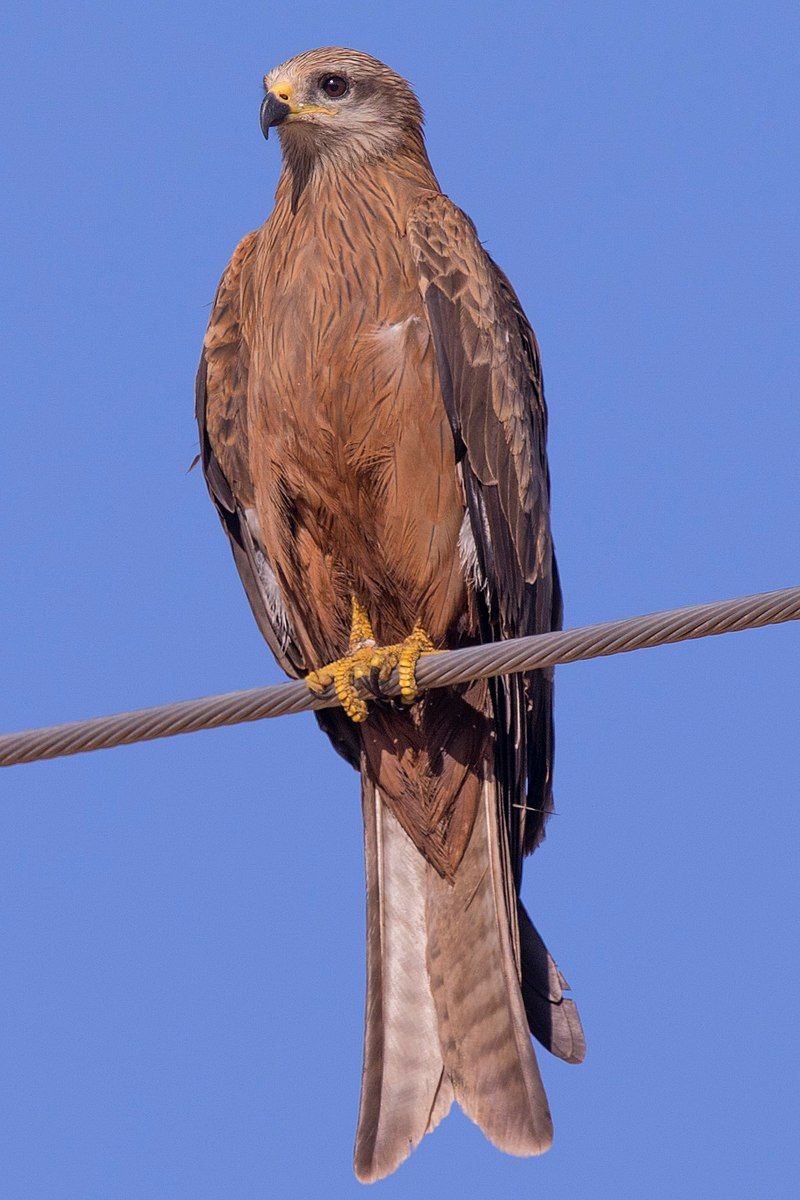
The black kite is a bird of prey belonging to the Accipitridae family, a group of raptors that are active during the day.
It is believed to be the most common species of Accipitridae globally, although some populations have experienced major decreases or changes in numbers over time.
These fluctuations could be caused by environmental factors such as habitat destruction, or by human activities such as hunting or trapping. In some regions, conservation efforts have prevented further decline of the species.
For example, in some parts of Africa, the black kite population has increased due to the protection of their nesting grounds and the banning of hunting. In other areas, however, the population is still decreasing due to the destruction of their natural habitat.
The black kite is an important part of the food chain and plays an important role in the ecosystem. Therefore, we must protect and conserve its population and habitats in order to ensure its long-term survival.
| Kingdom | Animalia |
| Phylum | Chordata |
| Class | Aves |
| Order | Accipitriformes |
| Family | Accipitridae |
| Genus | Milvus |
| Species | M. migrans |
22. Lesser kestrel
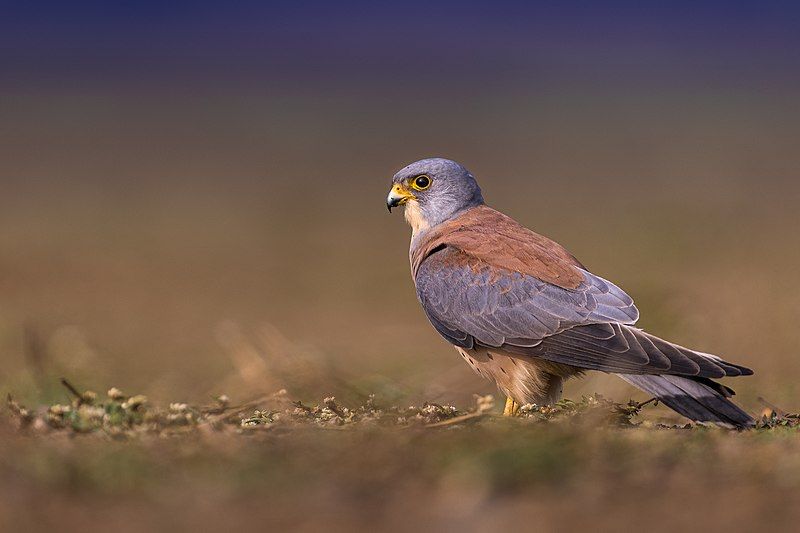
The lesser kestrel is a species of small falcon that can be found in a wide range of areas. It breeds in the Mediterranean region, as well as in countries such as Afghanistan, Central Asia, China, and Mongolia. During the summer, the lesser kestrel migrates to Africa and Pakistan.
In some cases, it even travels to India and Iraq for the winter. This species is rare outside of its breeding range, and its population size is declining in the European range.
The lesser kestrel is an important species to monitor, as its population size is in decline and its range is limited. Conservation efforts need to be put in place to ensure the species is not lost.
| Kingdom | Animalia |
| Phylum | Chordata |
| Class | Aves |
| Order | Falconiformes |
| Family | Falconidae |
| Genus | Falco |
| Species | F. naumanni |
23. African Jacana
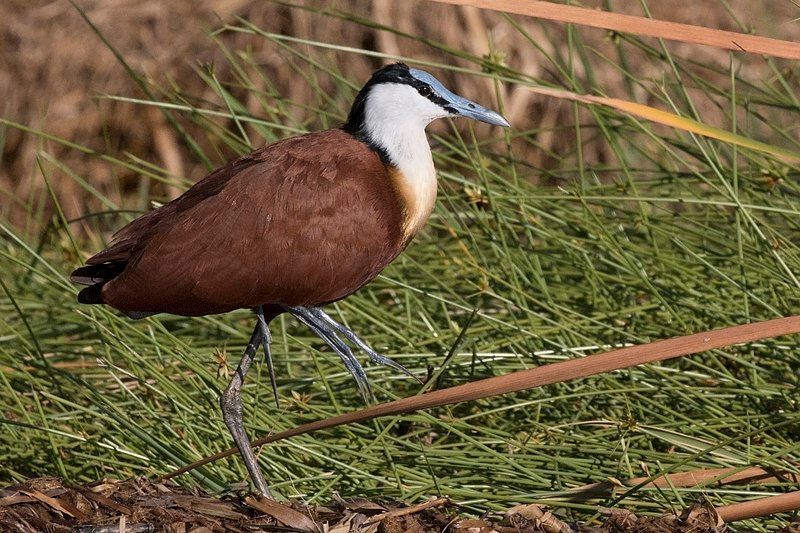
The African jacana is a type of wading bird from the family Jacanidae. It is found throughout sub-Saharan Africa. The African jacana is well adapted to its environment, with its long toes and claws making it perfect for walking on floating vegetation in shallow lakes.
This is its preferred habitat, as the shallow lake environment provides plenty of sources of food and shelter. These birds have a unique foraging strategy as they are able to walk on the floating vegetation without sinking.
This behavior allows them to search for food in areas that other birds may not have access to. African jacanas eat insects, crustaceans, and small fish which they find by wading through the shallow waters. They also feed on plant matter found in the lake.
African jacanas are important members of the ecosystem as they help to control the insect and fish populations. They also provide food for other animals in the area such as birds of prey and mammals.
| Kingdom | Animalia |
| Phylum | Chordata |
| Class | Aves |
| Order | Charadriiformes |
| Family | Jacanidae |
| Genus | Actophilornis |
| Species | A. africanus |
24. Gray Heron
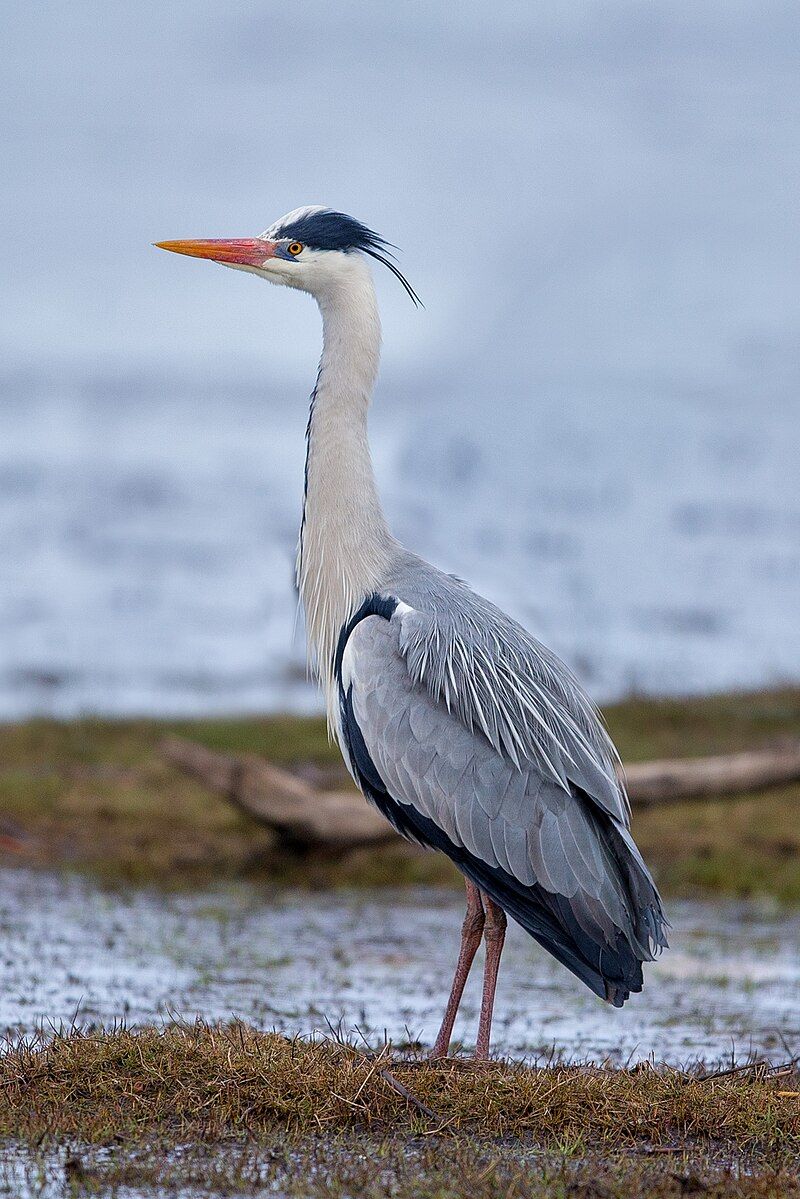
The grey heron is a majestic bird that has a long-legged and slender body, with a wingspan of up to 180 cm. It is a member of the heron family, known as Ardeidae, and is found in a variety of temperate climates across Europe, Asia, and Africa.
The heron is a resident bird in the majority of its range, however, certain populations of herons that reside in more northern areas tend to migrate southwards as the autumn season approaches. The grey heron can be distinguished by its grey or blue-grey feathers and yellow legs.
It has a long and pointed beak and a white head with a black streak running down the back. It is usually spotted standing motionless in shallow waters and uses its sharp vision to spot small fish or amphibians in the water. It then quickly darts forward to catch its prey.
The grey heron is quite a solitary bird, preferring to stay alone or in small groups, although they can be found in large flocks during the migratory season. They are also quite adaptable and can live in a variety of habitats such as marshes, lakes, rivers, and coastal areas.
The grey heron is an important species in many regions, as it helps to keep the aquatic ecosystems healthy and balanced. It feeds on a wide variety of small aquatic creatures, which helps to keep the population of those creatures in check.
It is also a popular bird among birdwatchers, as it is found in a variety of habitats and can be quite easy to spot.
| Kingdom | Animalia |
| Phylum | Chordata |
| Class | Aves |
| Order | Pelecaniformes |
| Family | Ardeidae |
| Genus | Ardea |
| Species | A. cinerea |
Conclusion
Nairobi is a great place for birding, with its mix of urban and natural habitats providing a wealth of species to observe. From the iconic crowned crane to the colorful lovebirds, there is something for every bird enthusiast.
With its wide variety of birds, Nairobi is a great place to explore and appreciate the beauty of birds.